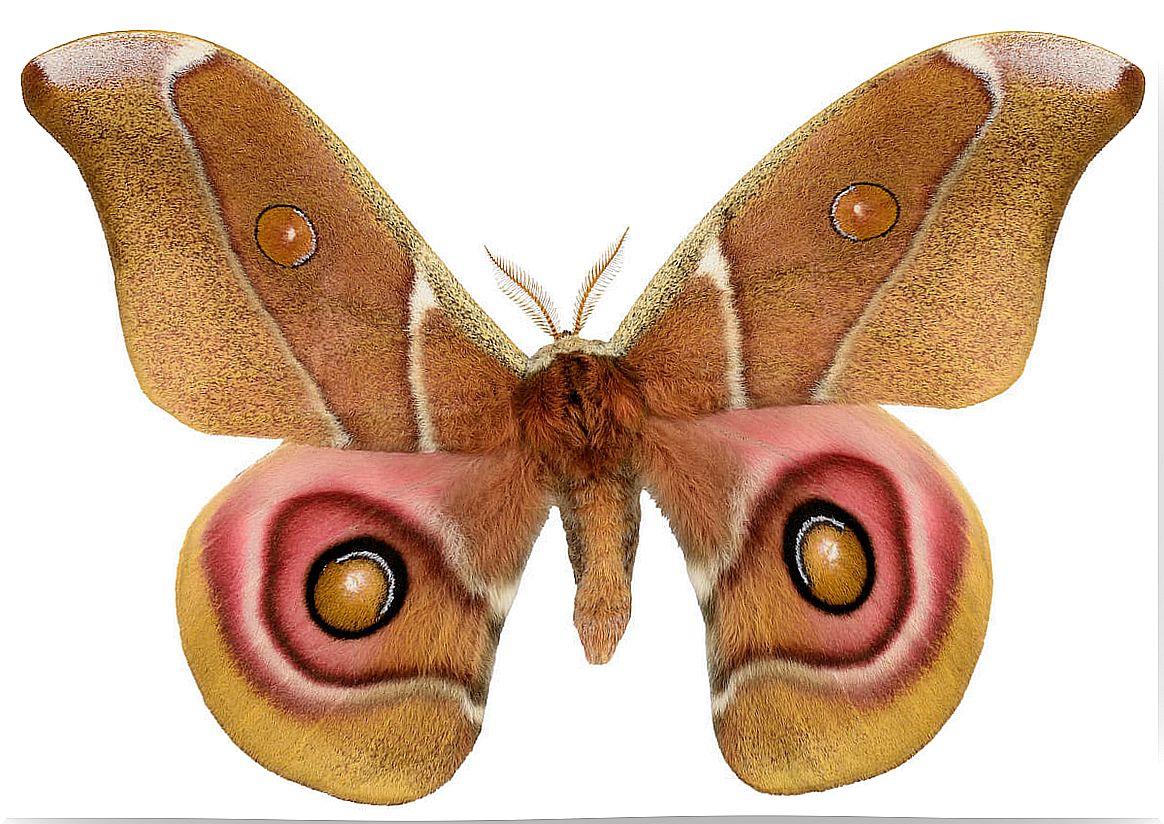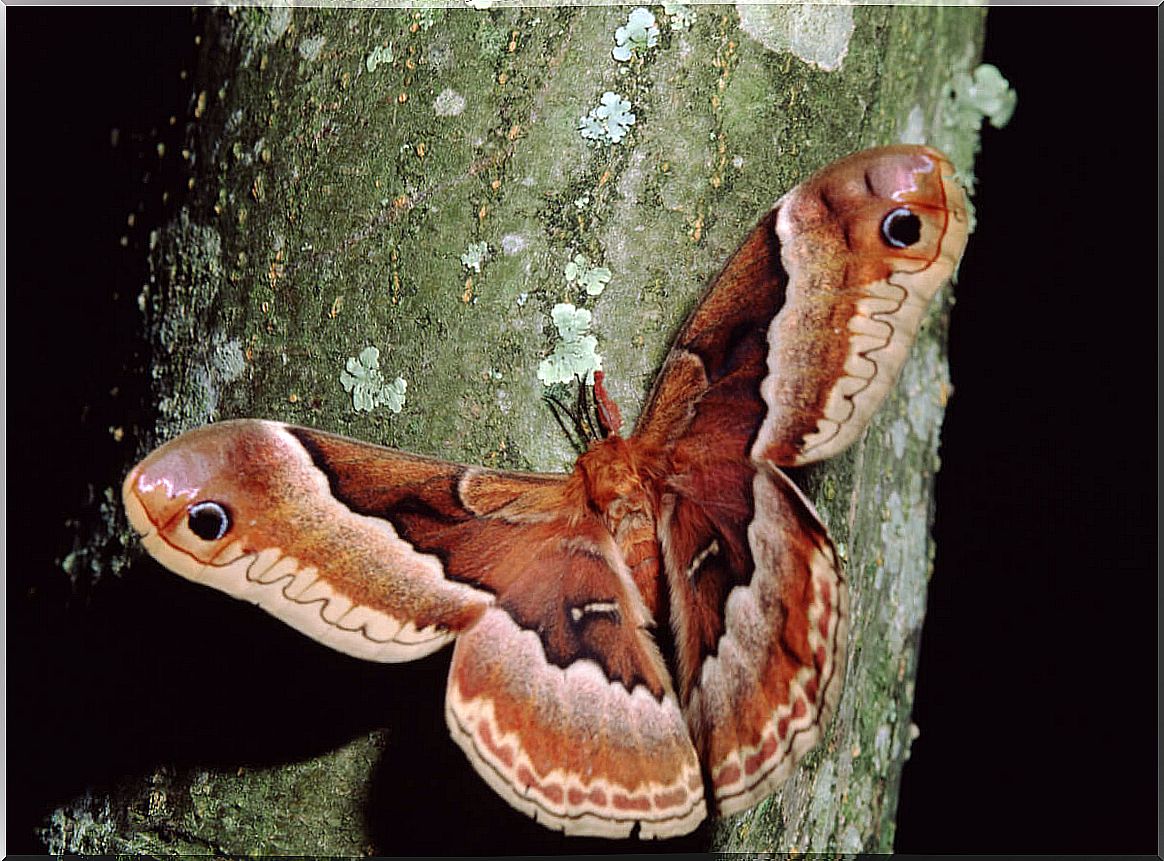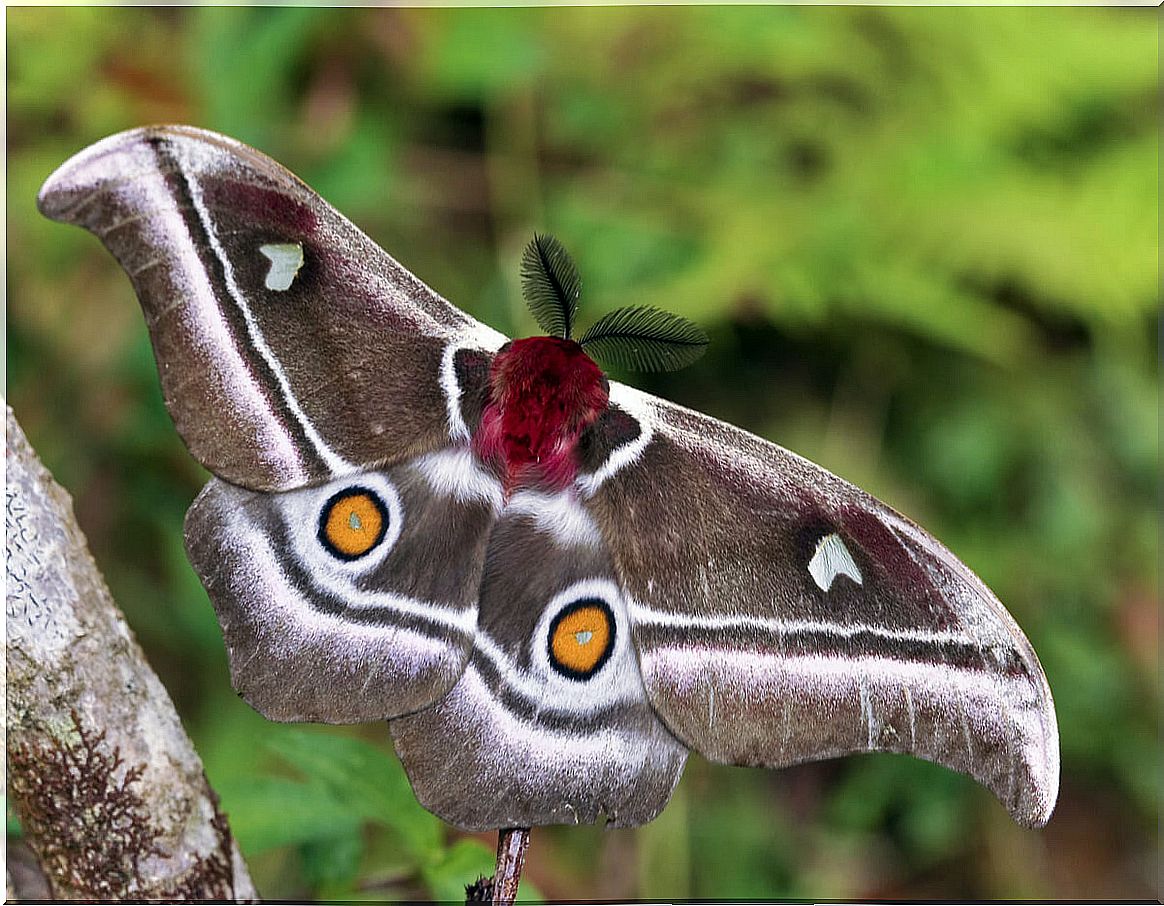Deaf Moths And Acoustic Camouflage

According to scientists, there are species of deaf moths and hearing moths. In these invertebrates, hearing is a trait that allows them to evade their main predator: bats.
Thus, it has been the subject of research to determine how earless moths evade predation. If you want to know more about this fascinating phenomenon, we encourage you to continue reading.
How does echolocation work and how to avoid it?
First of all, it should be noted that bats detect their prey by emitting pulses of sound waves and receiving the echo of this signal that solid objects reflect. If the material “bouncing off the waves” moves, as is the case with flying moths, the reflected signals will shift in frequency.
Thus, the changes in these waves allow the bat to detect the speed of its prey. This is also useful in the human world, as radio waves are used because they can travel long distances in the air, even in the presence of fog or precipitation.
It is important to note that humans cannot hear the ultrasound emitted by echolocator bats. However, some insects, such as moths, beetles, and crickets, are capable. When an insect hears its predator, it can evade it, for example by flying in a zigzag or spiral, and thus avoid being eaten.
In sum, while many nocturnal insects – including species of moths – evolved to hear the ultrasonic calls of bats, others, such as deaf moths, did not. How then do they survive the predators that stalk them?

Deaf moths have another strategy
Expert entomologists have identified the escape strategy of two species of deaf moths, Antherina suraka and Callosamia promethean . The researchers determined that these deaf moths wear noise-canceling scales on their bodies to avoid detection by predators.
Also, professionals found that these hair-like growths can absorb up to 85% of the sound waves emitted by bats. In this way, these structures act as a type of biological stealth coating.
The acoustic camouflage fur
In the same way that visual camouflage makes things difficult to see, acoustic camouflage makes the moth difficult to detect with sonar. Although moths and butterflies have similar wings, most butterflies are active during the day and do not face the threat of predation from bats.
On the other hand, moths that have nocturnal habits have scales on their bodies and around the joints of their wings, which are thicker and denser than those of butterflies.
The moth scales resemble a fur coat and absorb sound. In this sense, the scales that make up this biological garment are structured at a microscopic level, so they vibrate at the correct frequencies to absorb the ultrasound waves emitted by bats.

Man could imitate deaf moths
Various investigations in deaf moths showed that the scales on the bodies of deaf species looked structurally similar to the fibers used in soundproofing technology, commercially available. Thus, various studies could contribute to the development of biomimetic materials from these flakes.
This could contribute to the design of thinner and better absorption noise control devices. For this reason, it is possible that in the future, scientists may be inspired by these moths to develop multidirectional and broadband ultrasound absorbers.









